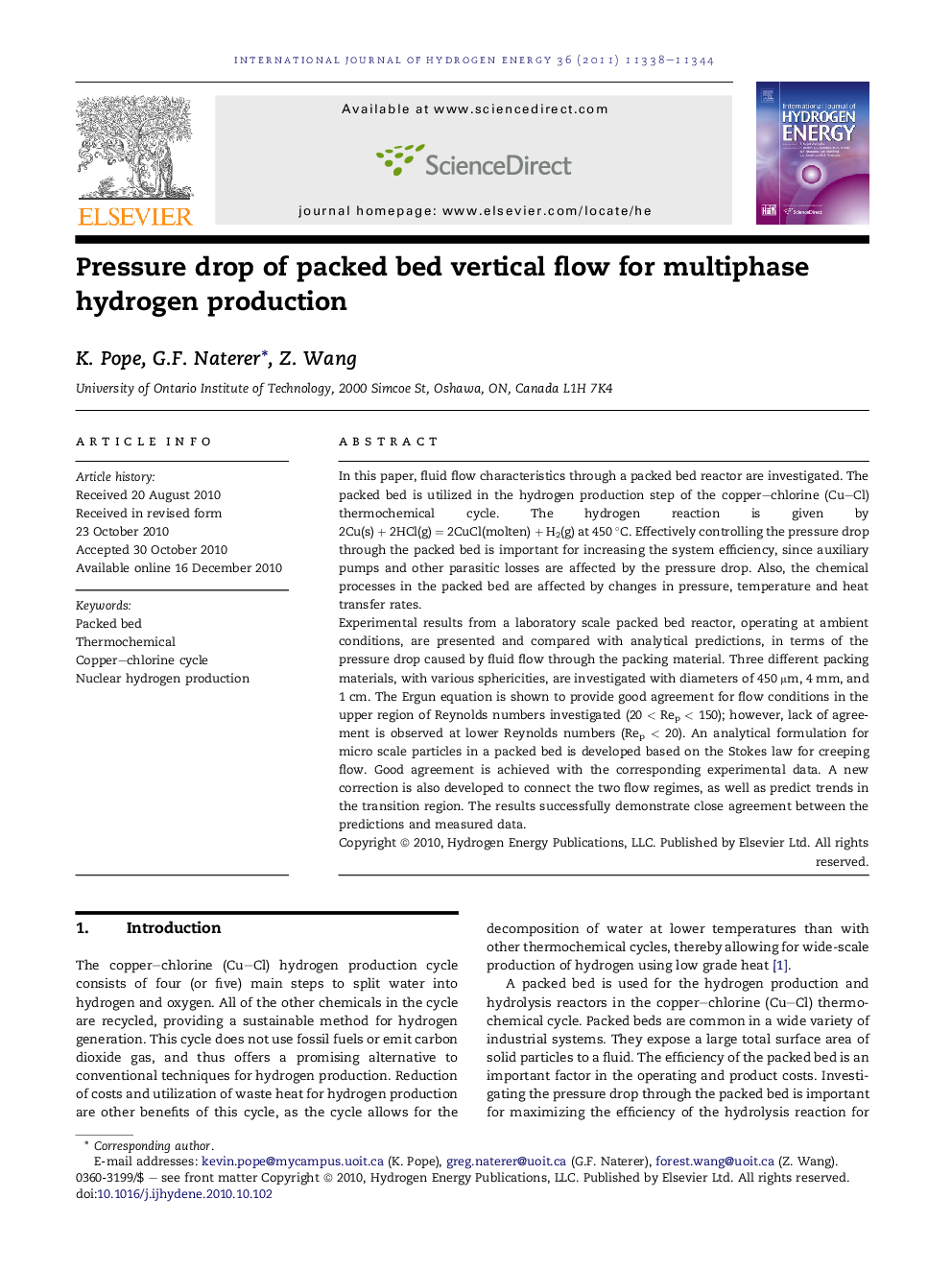| Article ID | Journal | Published Year | Pages | File Type |
|---|---|---|---|---|
| 1277607 | International Journal of Hydrogen Energy | 2011 | 7 Pages |
In this paper, fluid flow characteristics through a packed bed reactor are investigated. The packed bed is utilized in the hydrogen production step of the copper–chlorine (Cu–Cl) thermochemical cycle. The hydrogen reaction is given by 2Cu(s) + 2HCl(g) = 2CuCl(molten) + H2(g) at 450 °C. Effectively controlling the pressure drop through the packed bed is important for increasing the system efficiency, since auxiliary pumps and other parasitic losses are affected by the pressure drop. Also, the chemical processes in the packed bed are affected by changes in pressure, temperature and heat transfer rates.Experimental results from a laboratory scale packed bed reactor, operating at ambient conditions, are presented and compared with analytical predictions, in terms of the pressure drop caused by fluid flow through the packing material. Three different packing materials, with various sphericities, are investigated with diameters of 450 μm, 4 mm, and 1 cm. The Ergun equation is shown to provide good agreement for flow conditions in the upper region of Reynolds numbers investigated (20 < Rep < 150); however, lack of agreement is observed at lower Reynolds numbers (Rep < 20). An analytical formulation for micro scale particles in a packed bed is developed based on the Stokes law for creeping flow. Good agreement is achieved with the corresponding experimental data. A new correction is also developed to connect the two flow regimes, as well as predict trends in the transition region. The results successfully demonstrate close agreement between the predictions and measured data.
